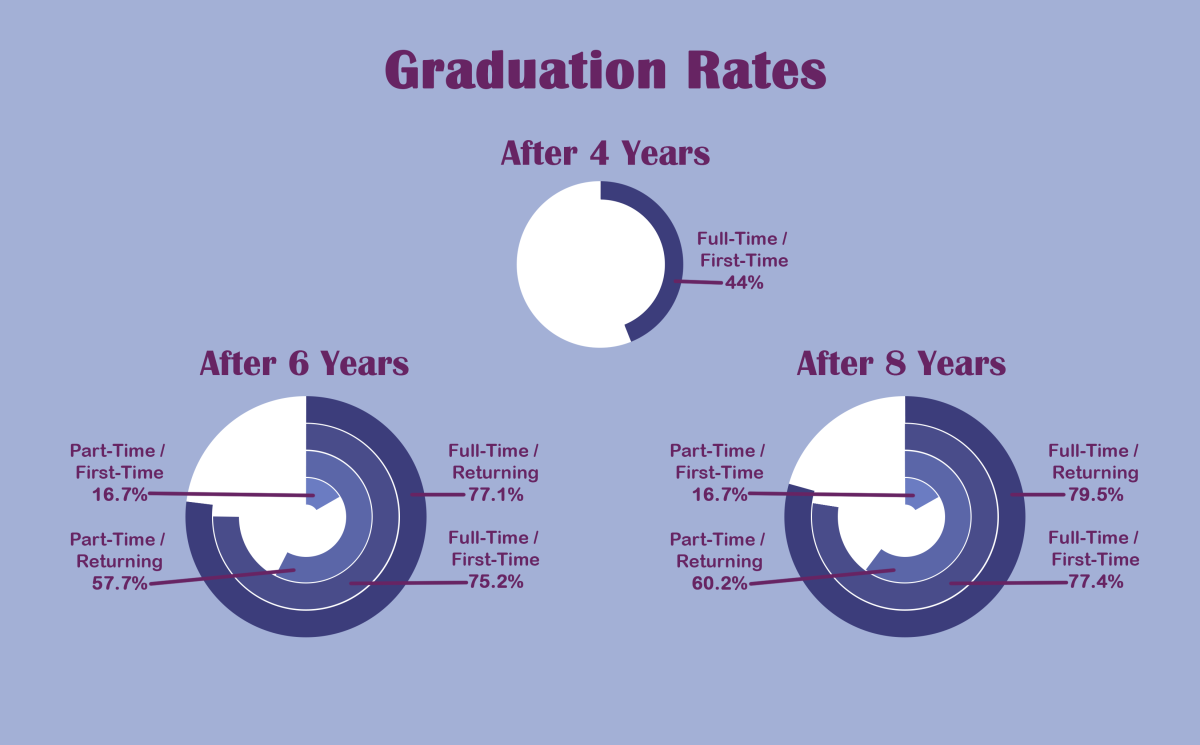Through several initiatives and support systems, such as living and learning villages, NC State has managed to retain first-year students, and its students graduate at significantly higher rates than national and state averages.
A university’s retention rate is defined as the percentage of students that continue at the school after their first year, according to FAFSA. College Factualreported that the average retention rate in the US is 72%, while the average in North Carolina sits at 67%. NC State, however, sits at a significantly-higher 93%.
According to Louis Hunt, senior vice provost, as of 2019, the retention rate has increased at NC State reaching just over 94%. Besides the retention rate, the university also has one of the better graduation rates as well. Nationally, the graduation rate, which tracks how many first-years graduate within six years of starting at a university, is around 57%. The UNC System sits at 66%, and NC State holds a much higher 80%.
Hunt and Carrie McLean, director of advising for the Division of Academic and Student Affairs, explained that NC State takes steps to make sure that almost all students return. For instance, the admissions office makes sure that each candidate for enrollment is qualified to be a potentially-excellent college student.
“The students that get admitted are very highly qualified, so they have good academic credentials,” Hunt said. “We also provide a lot of academic advising for students and we have the technology to keep them on track with their degrees.”
McLean explained that factors outside of academics tend to contribute to students not returning.
“The reason students aren’t graduating has nothing to do with their capability,” McLean said. “By our standards of admission, we should be graduating every student that is admitted into this university. The reason we are losing students has to do with financial and personal crises.”
Hunt said the university enacted a strategic plan called Pathway to the Future in 2011, which was intended to be a holistic initiative that focused on supporting students inside and outside the classroom.
“You have to make sure the students have the academic, social and financial support they need,” Louis said. “I think we have done a good job with that.”
McLean said part of student success on a university level is having communication between different colleges.
“In 2015, we put together a university academic advising council that was across colleges and the whole university,” McLean said. “We pulled them together and brainstormed on what’s going on with our students. Students who are changing majors is huge, because I do not think anyone realizes how many students change their majors beyond their first year. Nobody knows they are doing that, so they are buying a lot of time for a degree.”
NC State has taken further initiative to increase the retention and graduation rate through learning villages. This is one of the ways that student success is improved academically and socially, according to McLean.
“We went from having three or four villages to having 12 or 13,” McLean said. “The whole idea behind living and learning villages is to blend in the classroom learning with outside living. Students probably learn just as much or more outside the classroom as they do inside, so aligning those experiences in the halls, creating more support in the classroom.”
Hunt said he is also interested in keeping another statistic, the four-year graduation rate, high; however, he sees barriers to increasing that number.
“We have made a lot of progress with our four-year rate, which means keeping students on track to finish their degrees in a timely manner,” Hunt said. “Our four-year rate will always be challenged a little bit because we always have students who co-op or do internships that push them out one or two semesters. That is fine because it is to the student’s benefit, and they are not paying tuition at the time.”








